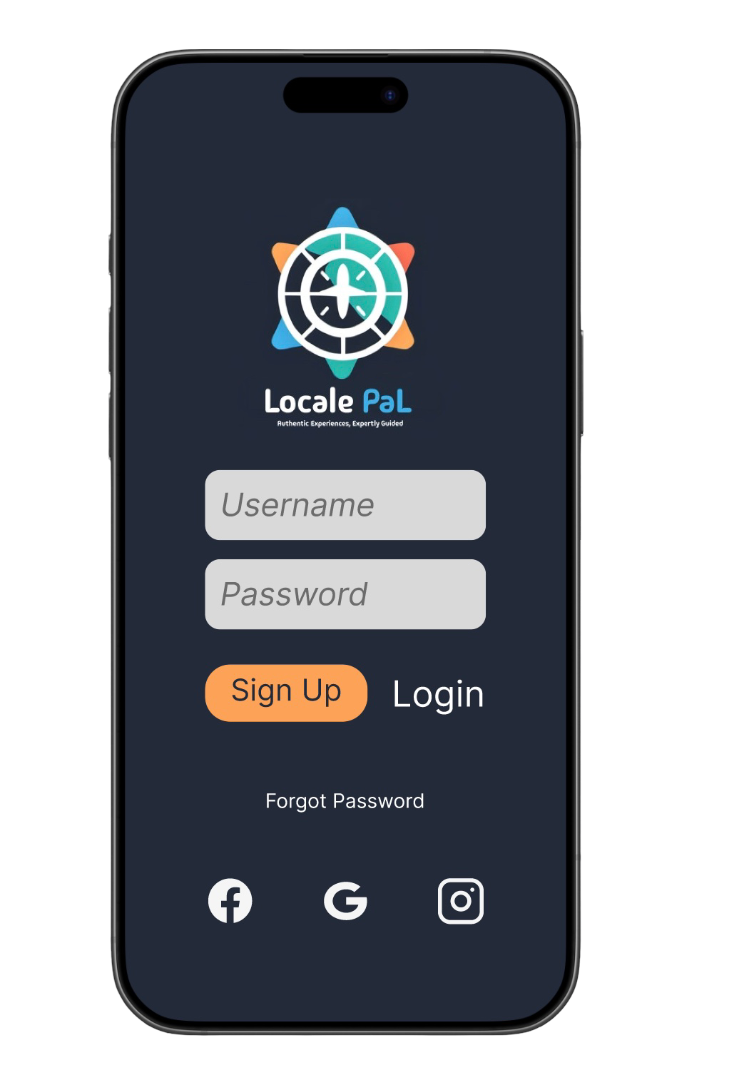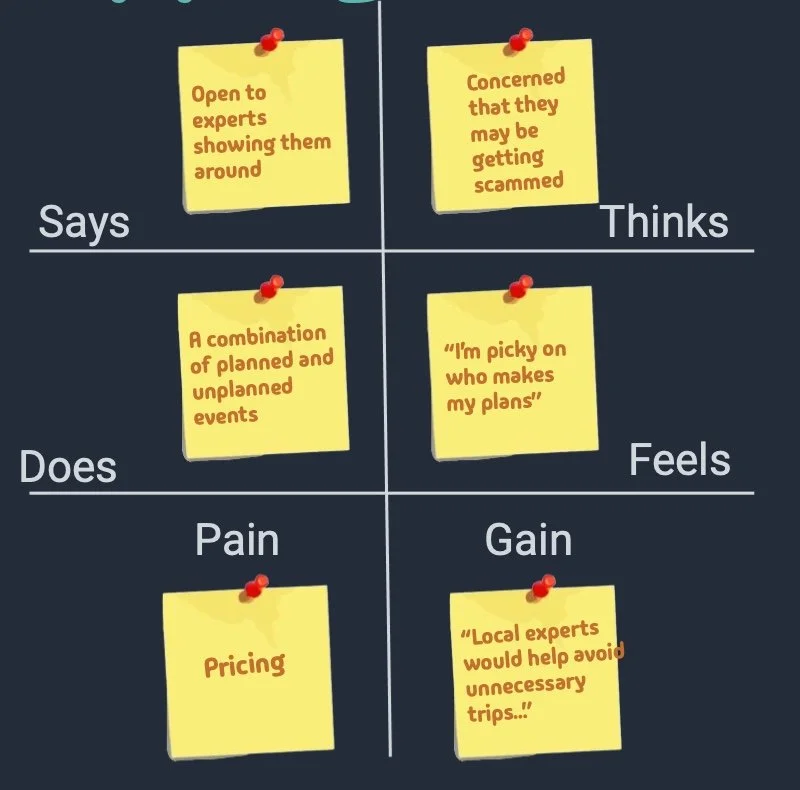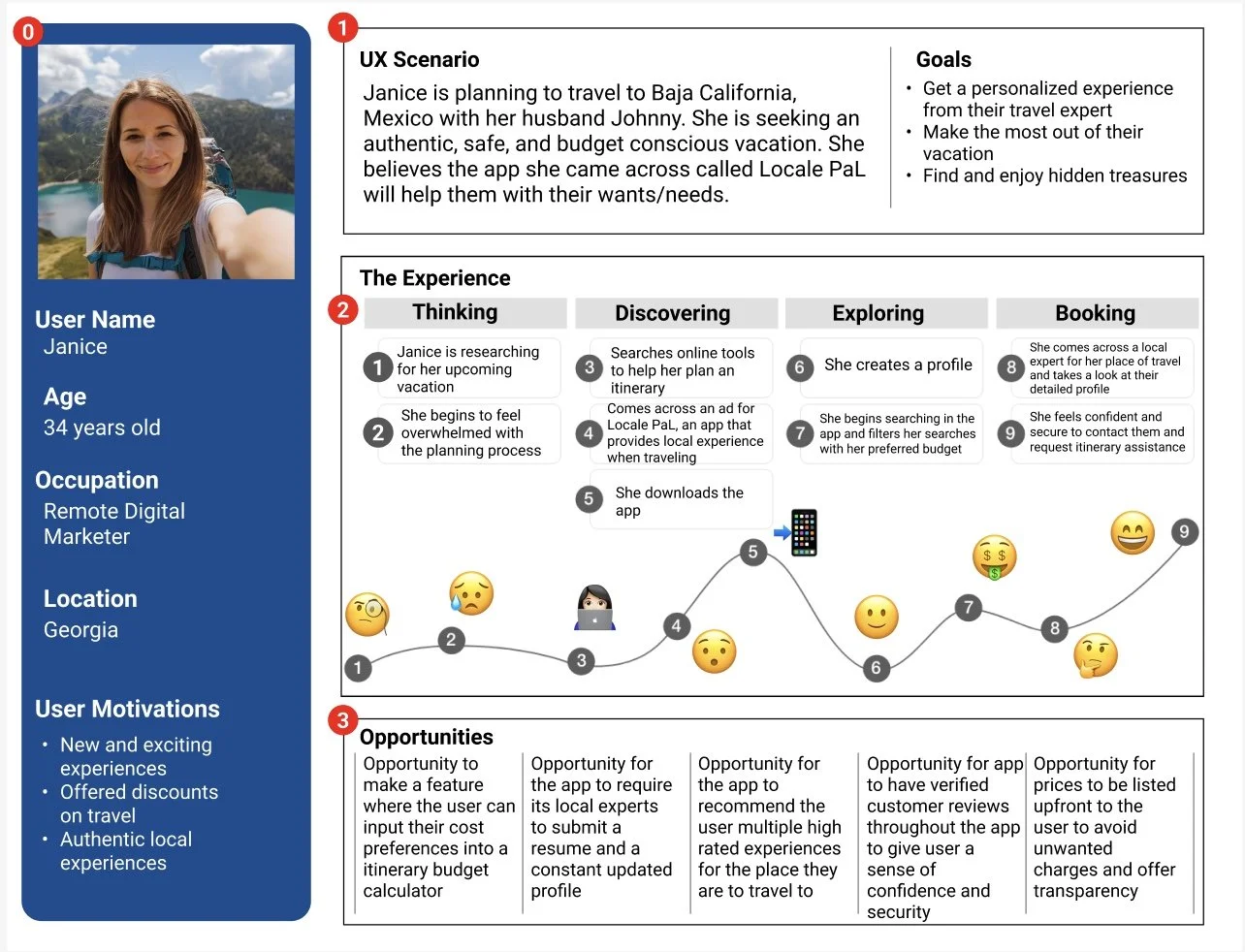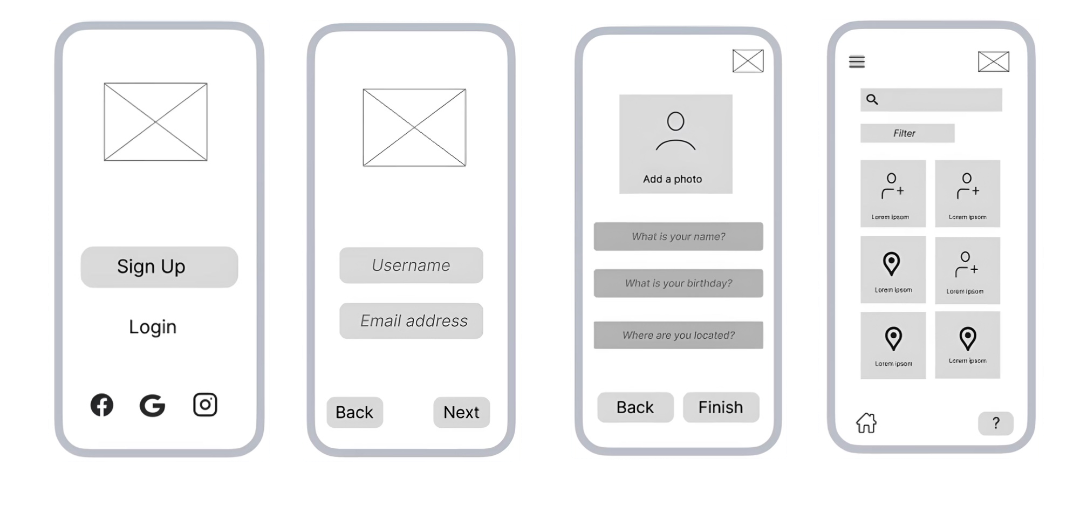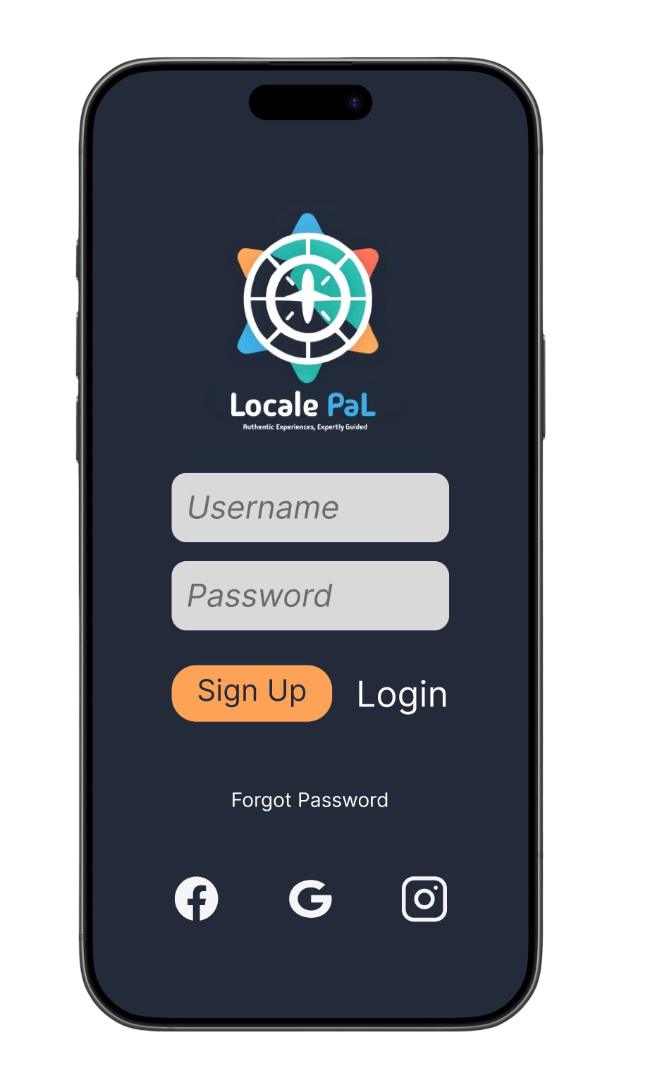Locale PaL
Locale PaL, a sharing economy app that transforms how cultural travelers book authentic vacations.
UX/UI Designer
UX/UI Researcher
The Brief
Locale PaL is a travel app that connects explorers with trusted local experts to craft authentic, personalized itineraries. Too often, travelers face the unfortunate reality of tourist traps and disappointing experiences. Locale PaL was created to make travel easier, safer, and more meaningful—so you can focus on enjoying the journey.
Research
Distribute surveys to a broad and diverse audience to better understand people’s travel app preferences, ideal vacation experiences, and the factors that influence their travel decisions.
Identify the key features that will attract users to download and engage with the travel app.
Conduct interviews with frequent travelers to gather insights into their planning behaviors, ideal vacation experiences, and the tools or platforms they currently use for trip preparation.
Validate our assumptions and cater to our audience.
Complete a competitive analysis on mobile apps similar to Locale PaL, such as GetYourGuide and ToursByLocals, to identify the strengths and weaknesses of existing apps.
Identify gaps in available solutions.
We found . . .
Users would be better convinced to seek advice from a travel expert if it fits in their budget
Users feel more confident and safe about travel experts when they have a profile with verified reviews
Users don't mind visiting touristy places but also enjoy unique experiences
Travelers often face significant challenges in crafting the ideal itinerary. They may fall into tourist traps or rely on guides with limited knowledge or social skills. Locale PaL aims to alleviate these challenges, ensuring a seamless and enriching travel experience for every user.
The Problem
Affinity Mapping
User Journey Map
How might we . . .
How might we make the app budget-friendly and accessible to all types of travelers?
How might we build credibility and trust so users feel confident using the app?
How might we help travelers create cultural and authentic experiences while on vacation?
User Flow
Low Fidelity Wireframes
My team and I mapped and wireframed 6 key pages for our app . . .
Sign up process
Finding an expert page
Help page
Budget page
Favorites page
My trips page
Mid Fidelity Prototype
Usability Testing
To validate our design decisions, we conducted in-person user testing using a “think-aloud” approach, encouraging participants to share their thoughts and identify any features they enjoyed or struggled with.
Likes:
Users appreciated the budget feature, noting that it would help them feel more confident when planning trips, as staying within budget is a key factor in their decision-making.
Likes:
Users appreciated the price transparency when selecting a travel expert, noting that it increased their confidence and sense of security. This finding supports earlier insights that fear of scams is a major factor preventing users from booking through unfamiliar platforms.
Likes:
Users viewed the inclusion of ratings and reviews for travel experts as a valuable addition that enhanced their trust in the platform. They emphasized that these features play a crucial role in their decision to complete any online transaction.
Suggestions:
Users pointed out the need for descriptions on the Budgets page for better clarity.
Suggestions:
Users would appreciate it if the app separated experts from locations for a more linear searching process.
Suggestions:
Users wished the navigation bar wasn't playing "hide and seek."
Next Steps
Complete Budget Page A/B Testing to ensure best results
Create a sitcky navigation bar
Iterate on existing pages and conduct more user tests
Complete a high-fidelity prototype
Despite having only three weeks to complete this design project, our team accomplished a great deal. The overall concept of our app is clearly represented and provides a strong foundation for future improvements. Locale PaL is simple, intuitive, and visually appealing.
Through research, ideation, prototyping, and testing, we brought this concept to life—and we look forward to refining it further. In UX/UI design, there’s always room for growth and iteration.
One key lesson I learned during this process is the importance of testing. As designers, it’s easy to become attached to our own work and overlook certain issues, but user feedback and critique are invaluable for uncovering blind spots and improving the final design.

